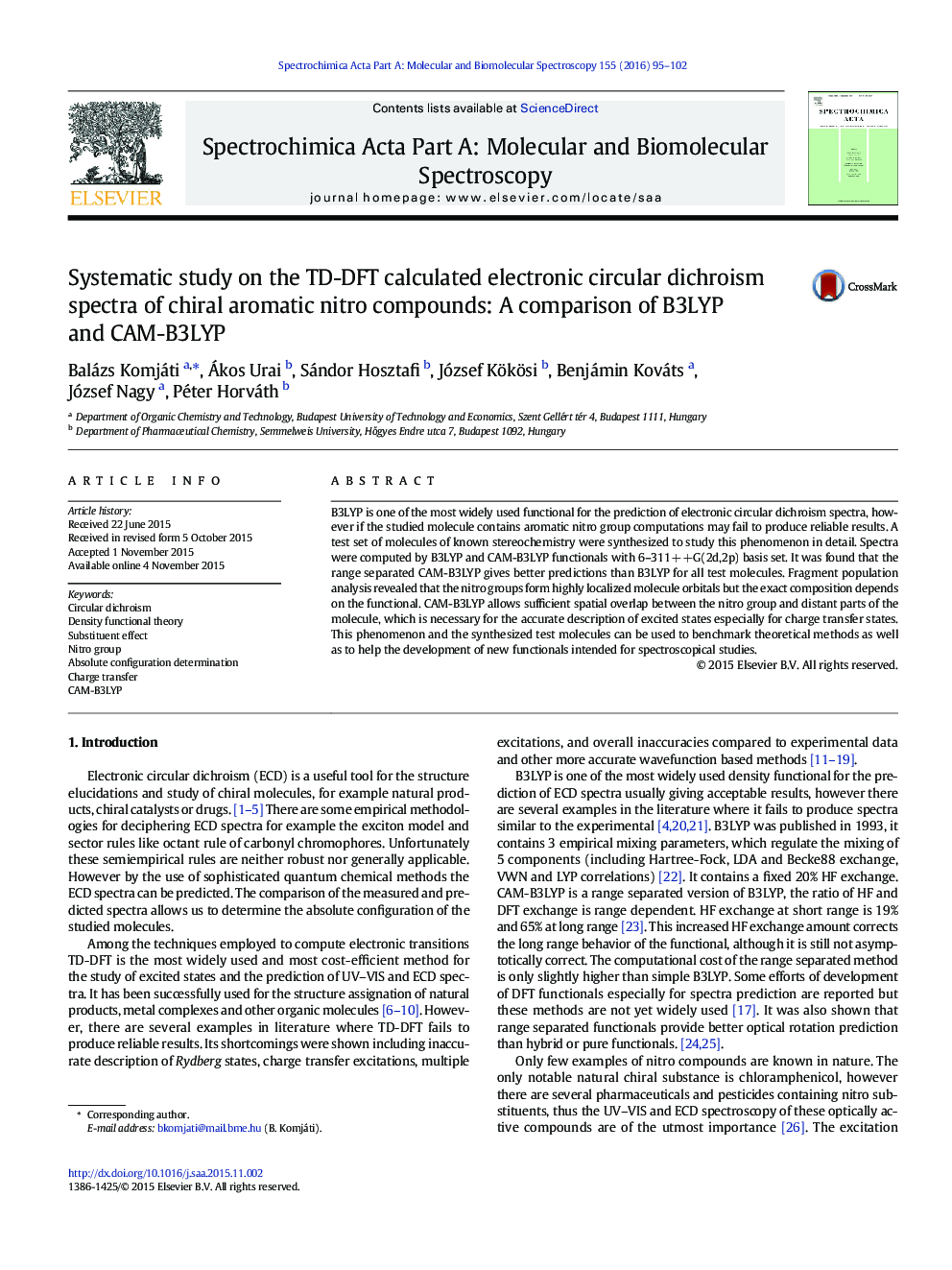| کد مقاله | کد نشریه | سال انتشار | مقاله انگلیسی | نسخه تمام متن |
|---|---|---|---|---|
| 1231573 | 1495214 | 2016 | 8 صفحه PDF | دانلود رایگان |

• Aromatic nitro compounds were studied with chiroptical and quantum chemical methods.
• Fragment population analysis was used to study long range interactions.
• CAM-B3LYP provides better ECD spectra prediction than B3LYP.
B3LYP is one of the most widely used functional for the prediction of electronic circular dichroism spectra, however if the studied molecule contains aromatic nitro group computations may fail to produce reliable results. A test set of molecules of known stereochemistry were synthesized to study this phenomenon in detail. Spectra were computed by B3LYP and CAM-B3LYP functionals with 6–311 ++G(2d,2p) basis set. It was found that the range separated CAM-B3LYP gives better predictions than B3LYP for all test molecules. Fragment population analysis revealed that the nitro groups form highly localized molecule orbitals but the exact composition depends on the functional. CAM-B3LYP allows sufficient spatial overlap between the nitro group and distant parts of the molecule, which is necessary for the accurate description of excited states especially for charge transfer states. This phenomenon and the synthesized test molecules can be used to benchmark theoretical methods as well as to help the development of new functionals intended for spectroscopical studies.
Figure optionsDownload as PowerPoint slide
Journal: Spectrochimica Acta Part A: Molecular and Biomolecular Spectroscopy - Volume 155, 15 February 2016, Pages 95–102